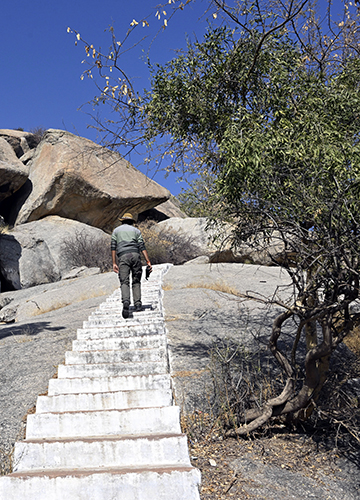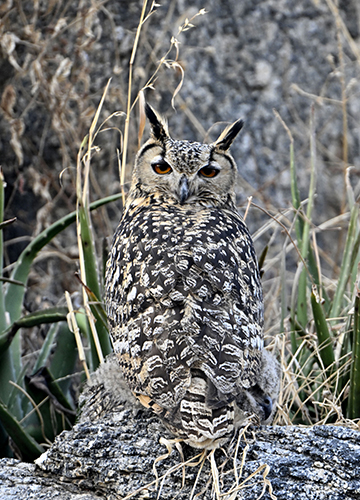It was late afternoon when I reached Bera, 140km from Udaipur in Rajasthan. The Aravalli hill ranges surrounding the village stood tall in the afternoon light. And in the caves and crannies of these hills reside leopards. I was in ‘leopard country’!
As soon as I arrived, my guide, Pushpendra Ranawat received information that Tara―one of the 30-40 leopards inhabiting the 11 hillocks of Bera―could be out on a stroll. If we made haste, we could catch a glimpse of her. And so, I joined him for an evening safari. I was excited thinking about the possibility of sighting Tara no sooner than I had arrived. As we approached the hills, I could hear roars, not of leopards, but safari jeeps. Astonished, I asked Ranawat, “How did a safari jeep get permission to go up the hills? Are there no restrictions at all?” He said that this had become a major concern, as it disturbs the leopards and other fauna.
To my great excitement, Tara soon emerged from a cave. I started clicking immediately, as it was close to sundown and the light was fading. But my enthusiasm was short-lived. Tara disappeared. However, I kept my eyes, camera and telephoto lens glued for a sighting. A member from another team assured me that she might soon be out on the prowl.
Tara was named so for her eyes that glow like stars in the darkness. Leopards here are named and revered, not tamed or feared. Shy by nature, they are nocturnal predators. The ones here usually feed on wild boars and nilgai. Only when the prey is hard to come by do they venture into the village, looking for goats and cattle.
The villagers, many of whom are from the Rabari community (shepherd), believe that it is perfectly reasonable for the cats to visit the village in search of food. Ranawat said that they could claim compensation from the forest department for the loss of cattle, but it was too much hassle.
Also, the villagers firmly hold that the leopard is connected to Lord Shiva―portraits of Shiva usually show him draped in leopard skin. Thanks to their professed proximity to the divine, leopards feature in the wall art of the temples that dot the hills. The villagers of Bera, therefore, share a unique bond with the leopards, making it one of the few places on earth where humans and leopards coexist peacefully. “Sittu (local name for leopards) live in that hill there,”said Otaram, a local resident and caretaker of one of the temples. “They never attack anybody. We do not disturb them either.”
The only clash you will see here is among the leopards, either over a mate or territory. The hillocks near Bera are a female leopard’s domain. “We have witnessed such fights,”said Ranawat. “Sometimes female leopards, too, fight a male intruder on their territory.”
Local residents who run leopard camps and resorts have many thrilling stories about the leopards, their habitat, behaviour and pattern. Storytelling forms an integral part of the safaris they organise. And, the leopards are not the only attraction in Bera. The Jawai River, which flows through Bera, has the picturesque Jawai dam across it. Seeing the sun rise and set here brings immense joy to tourists, who have been thronging the village to witness the harmony between man, animal and nature here. The tour guides arrange tea and snacks at this spot early in the morning and late evening as part of the safari.
Even as tourism is booming, it brings with it its own worries. Efforts are on to build a resort very close to the hillocks. The ad spiel will no doubt include a promise of leopard sightings. If that happens, Tara and her ilk may move out in search of a more peaceful habitat. With the leopards gone, there will be no bond to boast about.



